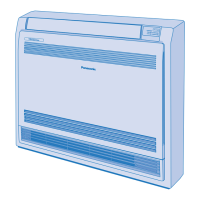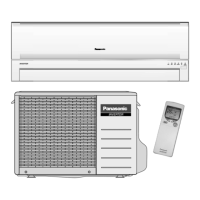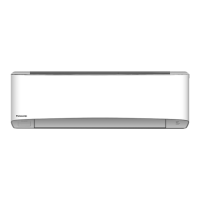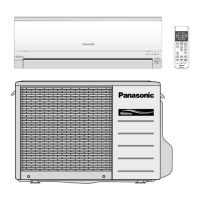29
10.1.2 Selection of Pipe and Heat Insulation Materials
When using commercial copper pipes and fittings, observe the following:
1 Insulation material: Polyethylene foam
Heat transfer rate: 0.041 to 0.052 W/mK (0.035 to 0.045kcal/mh°C)
Refrigerant gas pipe’s surface temperature reaches 110°C max.
Choose heat insulation materials that will withstand this temperature.
2 Be sure to insulate both the gas and liquid piping and to provide insulation dimension as below.
Model Pipe Dimension Thermal Insulation Dimension
E9*** Gas side 3/8" (Outer diameter 9.5 mm t0.8 mm) Inner diameter 12 - 15 mm t10 mm Min
E12*** Liquid side 1/4" (Outer diameter 6.4 mm t0.8 mm) Inner diameter 8 - 10 mm t10 mm Min
E18***
Gas side 1/2" (Outer diameter 12.7 mm t0.8 mm) Inner diameter 14 - 16 mm t10 mm Min
Liquid side 1/4" (Outer diameter 6.4 mm t0.8 mm) Inner diameter 8 - 10 mm t10 mm Min
3 Use separate heat insulation pipes for gas and liquid refrigerant pipes.
10.1.3 Installing the Indoor Unit
10.1.3.1 Exposed installation
10.1.3.1.1 Refrigerant piping
1 Drill a hole (70 mm in diameter) in the spot indicated by the symbol in the illustration as below.
2 The location of the hole is different depending on which side of the pipe is taken out.
3 For piping, see 10.1.5 Connecting the refrigerant piping.
4 Allow space around the pipe for an easier indoor unit pipe connection.
10.1.3.1.2 To drill a hole in the wall and install a sleeve of piping
1 Insert the piping sleeve to the hole.
2 Fix the bushing to the sleeve.
3 Cut the sleeve until it extrudes about 15 mm
from the wall.
When the wall is hollow, please be sure to use
the sleeve for tube assembly to prevent dangers
caused by mice biting the connection cable.
4 Finish by sealing the sleeve with putty or
caulking compound at the final stage.

